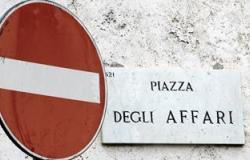The breakdown
An event described by experts as “unpredictable” and a type of collapse “that literature had never verified”, he says Christian Casarotto, glaciologist of the Muse, due to a particular meteorological context which, however, must be considered within the more general current climatic context. The detachment, explains Casarotto, «occurred following a weather event characterized by high temperatureswhich led to the melting not only of the surface part of the glacier, but also of part of the lower part”. This led to a high accumulation of water trapped beneath the glacier, which “thanks to the strong pressure raised the glacier and caused the collapse”, continues the glaciologist.
The climate
There was, therefore, “a concurrent cause of events”, since le temperature elevate caused the melting, but “if there had been a normal flow of water the glacier would not have collapsed”, says Casarotto. In any case, it remains that that particular meteorological event must be placed in the climatic context in which we live: «The climate describes the long term, not particular events such as summer 2022 or this year’s snowfall», explains Casarotto, «unless they start to occur more frequently. And it is characterized by rising temperatures and snowfall at increasingly higher altitudes». The consequence is the continuous retreat of glaciers, from which even the Marmolada is not exempt.
Forecasts, says Casarotto, sees mountains below 3,500 meters free of glaciers by the end of the century, except for a few small survivors near the ridges. So even if this year’s spring snowfall were to combine with a mild summer to lead to a positive balance for 2024, it would mean little for the long-term evolution.
New approach
A change that has been known about for some time now, but which following the tragedy on the Marmolada has come to the attention of the population, especially in light of the consequences it entails, both for civil society and for the world of mountaineering. “The collapse has forced everyone to change their paradigm in their approach to the mountains, rediscovering their risks, dangers and limits”, says the president of Sat Cristian Ferrari. The evolution of the glaciers will, in fact, lead to greater attention in their attendanceespecially because of the morphological changes that the change implies. For example, «it has been noted an increase in crevassed areas with concentric circular shapes, that is, crevasses that form because the melting from below, at the base of the glaciers, increases”, explains Casarotto. This melting leads to the formation of caves whose roofs can collapse, making previously safe areas no longer accessible or only with greater preparation. “The mountain is changing and the way people approach it must change at the same time”, warns the glaciologist.
The glaciers
The consequences will not only be seen in mountaineering or mountain activities, since the glaciers represent a resource that also influences life downstream. «It will be necessary dealing with a diminishing water resource“, Casarotto recalls, which will influence the hydraulic regime of the watercourses at the bottom of the valley as well as the water availability in the mountains and in the refuges. “A new awareness of a world without the glacial resource must arise”, says Casarotto, to build a new social, economic and environmental system. We need think quicklybecause with the increase in temperatures, the speed of environmental and glacier changes also increases: “At a scientific level, we are pushing to make rapid decisions. It’s like chasing a moving train that is moving faster and faster, and the longer you wait, the more difficult it will be to take cover with new and sustainable models”, concludes Casarotto.
The anniversary
On the occasion of the anniversary of the Marmolada tragedy, to remember the victims and to talk about Volunteering and mountain safetytoday in Trento and other cities the documentary «Marmolada 03.07.22» will be screened, dedicated to the story of the rescuers who intervened. The president of Sat Ferrari recalled, in this regard, the «values demonstrated by the mountain people, by the mountain professionals who silently and actively they took this tragedy on their shoulders helping the families to bear the great burden throughout the long rescue phase”. The president of the Autonomous Province of Trento, Maurizio Fugatti, also reiterated the value of the memory of what happened two years ago. “The memory of such an unpredictable event, which affected not only the families directly involved, but the entire province and the country, is alive and strong in our minds,” he said, inviting us to “work together to strengthen our resilience in the face of natural events, to protect our communities and preserve the memory of those who are no longer with us.”





